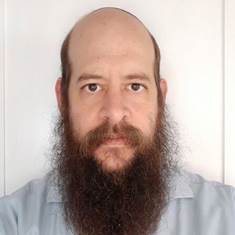
By: Moti Grauman, Digital Media Strategist at The MediaShop
 Moti Grauman from The MediaShop says advertisers that have halted their spend on Facebook to ‘Stop Hate for Profit’ is ambiguous.
Moti Grauman from The MediaShop says advertisers that have halted their spend on Facebook to ‘Stop Hate for Profit’ is ambiguous.
While the intent is clear, i.e. corporates need to stop supporting an organisation that is alleged to allow hateful content on their site for the sake of profit – it may also imply that stopping hate is in itself profitable.
Actually, it’s a bit of both, and savvy advertisers will know exactly where they stand.
The Stop Hate for Profit campaign has for all intents and purposes built up significant steam. There are according to the Movement’s website almost 400 companies participating in the initiative, who are pulling their ad spend during July or, and in some cases, beyond. This supposedly accounts for an estimated 98% of Facebook’s $70 Billion annual ad revenue.
The obvious question is will it make a difference and force Facebook to take more responsibility for the content that it allows to be published?
It would seem, according to a recent article on Gizmodo, that participation means different things to different companies and that the impact of the initiative is likely to fall short as a result. The article reports that a number of companies will pause their ad spend on Facebook while still advertising on Instagram (which is owned by Facebook). Other brands will exclude Instagram but continue to make use of Facebook’s Audience Network – you see the conundrum. For some global companies their stand may mean pausing US Facebook ad spend while continuing their advertising in other countries.
The result is that any impact will be severely mitigated as a result of ad revenue simply being redirected rather than stopped altogether. And this makes perfect sense. Why would any brand with responsibilities to their stakeholders stop advertising on a platform for an entire month or more if the results of that ad spend were significantly positive? Of course, positive results could be “undone” if the mere association with a platform made their brand look bad. To some, it’s not a question of believing inherently in the Stop Hate for Profit movement, but one of saving face. Effective advertising through the platform can continue while distancing itself from the Facebook brand.
No matter which side of the fence you sit, there is a question that needs answering: “Can (big) brands afford not to have Facebook in their media plans? And therefore: “What are the costs of taking a stand?”
Grace Kite writes on Marketing Week that: “for some companies social media is critical while for others it makes very little difference.” That’s obvious, but the key is knowing where “you” are.
The product type, and the target market are predictably the strongest determinants of the importance of social media.
For some brands, social media is really very effective at driving sales, but for others it isn’t effective at all. Econometric studies show that ROI is much more variable for social media than it is for almost all other channels.
That isn’t a bad thing in itself. It just means that advertisers need to ensure they can reach the right end of the ROI range or else reallocate spend to other channels where returns are more reliable.
Facebook’s own research doesn’t address when it’s best to use the channel versus not, so evidence from econometrics projects is helpful. This uniquely allows a comparison of effectiveness across media channels and untangles indirect effects like a TV ad driving people to click on a Facebook ad. With a more accurate view of ROI in hand, it’s clear there are some types of advertisers that should consider avoiding social media even in normal times.
It is low interest categories like insurance, politics, banking and toilet paper that see small effects of social advertising and therefore investment that sometimes doesn’t pay back. On the other hand, high interest categories like beer, TV, and video games see much bigger effects.
As Matthew Chappell from Gain Theory put it: “There does appear to be some statistically significant skew towards higher interest goods like cars and high interest FMCG plus, as you’d expect, companies who sell more online do better on social.”
The demographic of the target audience matters too. Younger people are more likely to be persuaded by advertising on Facebook versus other channels. In our experience, the converse is also true. Older people are much less likely to be convinced on this channel.
And then there are some social media campaigns that get an ROI boost because they have a long-lasting effect on sales. We’ve seen video rich social campaigns work like TV in some cases, with effects lingering for more than six months.
This is a feature of social video that we as an industry need to understand better. As linear TV audiences decline and ad-free subscription TV grows, the role of social video in brand building will become more important.
In the examples we’ve seen, YouTube has been a key platform in driving long term effects rather than Facebook. If this is a wider pattern, it could be driven by view-through rates being higher on YouTube and sound being switched on by default, but there is much still to learn.
In the meantime, it will be interesting to see whether any of the brands that boycott Facebook this month report declining sales as a result. This could well be the case for Coca-Cola, North Face and Adidas, which have relatively young audiences that play in relatively high interest categories.
Other brands might not notice the difference, especially with the effect of Covid-19 and associated lockdowns still reverberating through the economy.
Either way, all brands considering investment into Facebook need to experiment and evaluate, and not only using the platform’s own tools. Dispassionate analysis that can compare social against other media channels which will help marketers navigate these turbulent times.
- MRF Unveils Latest MAPS® Data - 20th February 2025
- The BRC announces changes to the board and updates for 2025 - 17th December 2024
- Top 50 DSTV TV programmes – October 2024 - 12th November 2024






